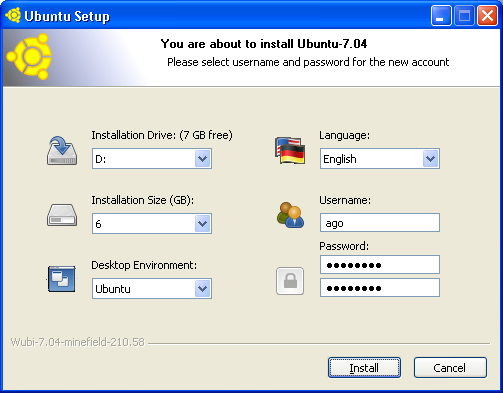
Linux, to me, is like all the girls in college when you’re still dating a girl from back home. Free, good looking, easy to use, and with a lot of cool, unique features and abilities. After a while, though, you end up missing what’s familiar to you so you head back to what’s comfortable even though it’s expensive, unstable, and needs constant tweaking to keep things running smoothly.
I don’t have the patience to go through a full install of Ubuntu but I also don’t think that running the Live CD does the operating system justice. If only there were an easy-to-use Windows installer that didn’t "require you to modify the partitions of your PC or to use a different bootloader." Enter Wubi.
Here’s some more information from Wubi’s FAQs…
"How does Wubi work?
Wubi adds an entry to the Windows boot menu which allows you to run Linux. Ubuntu is installed within a file in the windows file system (c:\wubi\disks\system.virtual.disk), this file is seen by Linux as a real hard disk.
Is this running Ubuntu within a virtual environment or something similar?
No. This is a real installation, the only difference is that Ubuntu is installed within a file as opposed to being installed within its own partition. Thus we spare you the trouble to create a free partition for Ubuntu. And we spare you the trouble to have to burn a CD-Rom.
What is the performance?
The performance is identical to a standard installation, except for hard-disk access which is slightly slower. If your hard disk is very fragmented the performance will degenerate. However, once the Ubuntu install created by Wubi has been transferred to a dedicated partition using LVPM, the hard drive access speed will be identical to that of a standard Ubuntu installation."
So basically, you have a very-nearly complete installation of Linux that you can easily commit to by using LVPM. If you decide it’s not for you, simply uninstall Wubi under Add/Remove Programs just like you would any other software.